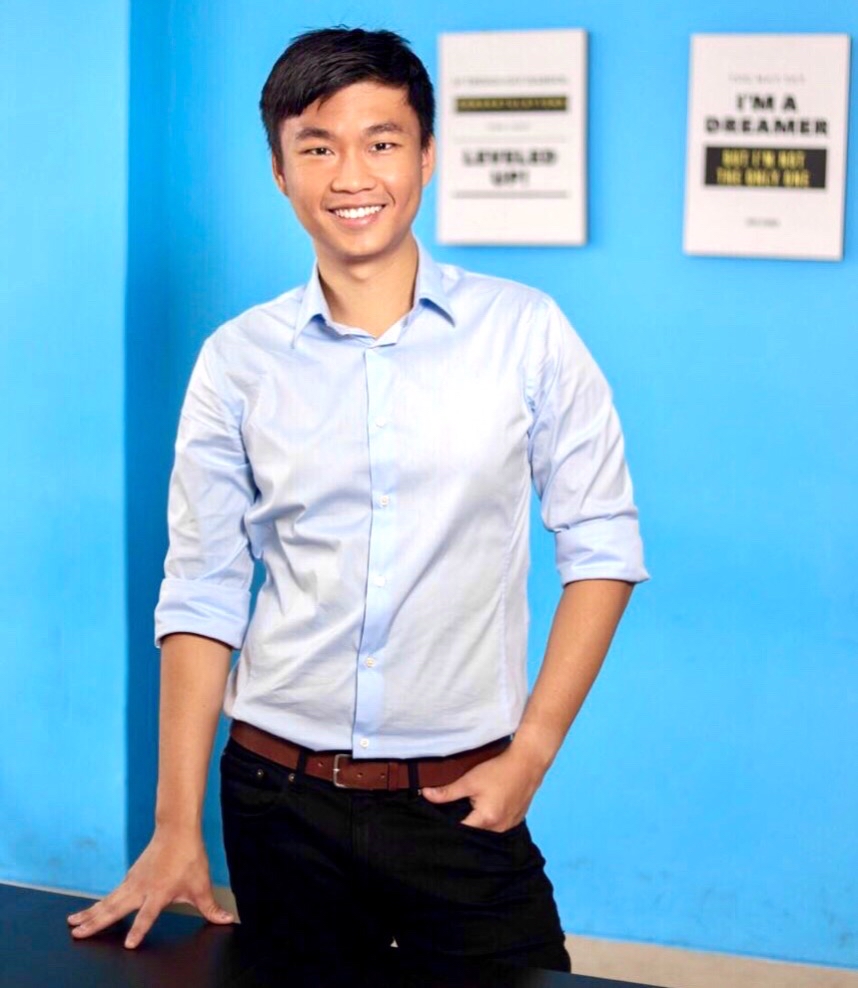Every fresh graduate faces the same challenge: to find the right job that suits their passion and skills. The process of seeking employment straight out of university can be confusing and overwhelming, but there are job matching platforms that help would-be professionals find the perfect match, like Glints.
Headquartered in Singapore, Glints was founded in 2013 by young entrepreneurs Oswald Yeo, Looi Qin En, and Seah Ying Cong to help job seekers in Asia connect with potential employers. The company’s eponymous platform originally matched candidates with jobs, but Glints is now evolving into a skills and career development platform that helps young professionals cultivate their expertise.
“We saw that there was a problem in Southeast Asia where a lot of young people lacked access to the right opportunities or the right skill sets to get to where they want to be. Many people, especially in places like Indonesia and Vietnam, go through many years of school but end up not getting the right skills for the job market,” Oswald Yeo told KrASIA in a recent interview.
He mapped out the mismatch that is present in the region. “There is a lack of supply of skilled talent available to meet the demand, because the education system is not catching up fast enough to the needs of the industry, especially in certain verticals such as the tech industry. This creates an opportunity for job platforms like ours to not only take available talent out there to be matched with employers, but also create supply through training programs as well,” Yeo said.
Yeo himself never graduated from university, as he dropped out when he was attending the University of California, Berkeley, to focus on the startup in 2016. “We started Glints before we started university. At the beginning, I wanted to juggle both, which was a terrible idea, and I also realized that I was not learning as many practical skills from university in the US, so I decided to come back to Singapore and focus on building Glints,” he said.

Last year, the startup launched Glints Academy, a 12-week coding bootcamp that equips young professionals with skills needed in the tech industry. The program offers a series of intensive training in full-stack web programming to transform beginner coders into full-fledged developers. After graduating from the program, Glints connects students with hiring partners like Tokopedia, FWD Insurance, AIA, and others.
In order to ensure that their curriculum is relevant to firms in the region, Glints listens to feedback from various tech companies to learn about what skills they need from incoming talent. In the past six months, 160 students have completed the program at Glints Academy, and 85% of them successfully landed a job within 60 days, Yeo said. The startup has received thousands of applications for the next batch, although it only accepts up to 50 people at a time.
Interestingly, Glints chose Batam, a city in Riau Islands, as the location for its academy instead of Jakarta. Batam was chosen for its proximity to Singapore, where many of Glints’ clients are located. “We have lots of Singaporean clients who want to get talent from Indonesia, because there is not enough supply in Singapore,” Yeo said. “So by residing in Batam, employers can bring them over to Singapore almost every week. Moreover, we want to give candidates exposure to overseas employers. There is a cross-border recruitment angle that we want to explore as we are now operating in three markets—Singapore, Indonesia, and Vietnam.”
Since Glints Academy trains students who may not necessarily have a stable source of income, they don’t charge any fees upfront. They currently offer students an income share agreement, where students can repay their tuition after they are employed.
Batam is only a starting point for Glints Academy, as it plans to open new schools in Yogyakarta and Jakarta in the near future. It also will launch online programs in April. “We want Glints Academy to be 100% accessible across Indonesia, so we are exploring possibilities to open offline courses in different locations, as well as online programs to reach more students.”
Glints’ recruitment platform is also showing promising growth. Its registered user count has increased fourfold from 2019 to 2020. Today, Glints has approximately 85,000 companies seeking future employees on the platform. It sees about two million unique visitors every month, according to Yeo.
Unlike job classifieds sites, Glints applies a full-stack recruitment model, meaning the platform only charges companies after they find the right candidates to fill the vacant positions. “With Glints, companies are able to fill positions very quickly at lower rates. We combine the skills of experienced recruiters with the efficiency of technology, the algorithm does initial shortlisting and our own recruiters will work with employers to follow up on candidates afterwards,” Yeo said.
Glints has raised USD 9.7 million in funding so far. Its latest investment round yielded USD 6.8 million led by Monk’s Hill Ventures in July 2019. The company is currently in talks with various investors about its next round of funding, but has nothing concrete to share for now.
Going forward, Glints wants to focus on transforming the company from a recruitment platform into a comprehensive recruitment and education network. The company is also eyeing Thailand and the Philippines for its next markets but yet to announce its timeline for expansions. At the moment, Yeo said they’re focusing on making Glints the top career platform in Indonesia and Vietnam.
This article is part of KrASIA’s “Startup Stories” series, where the writers of KrASIA speak with founders of tech companies in South and Southeast Asia.

